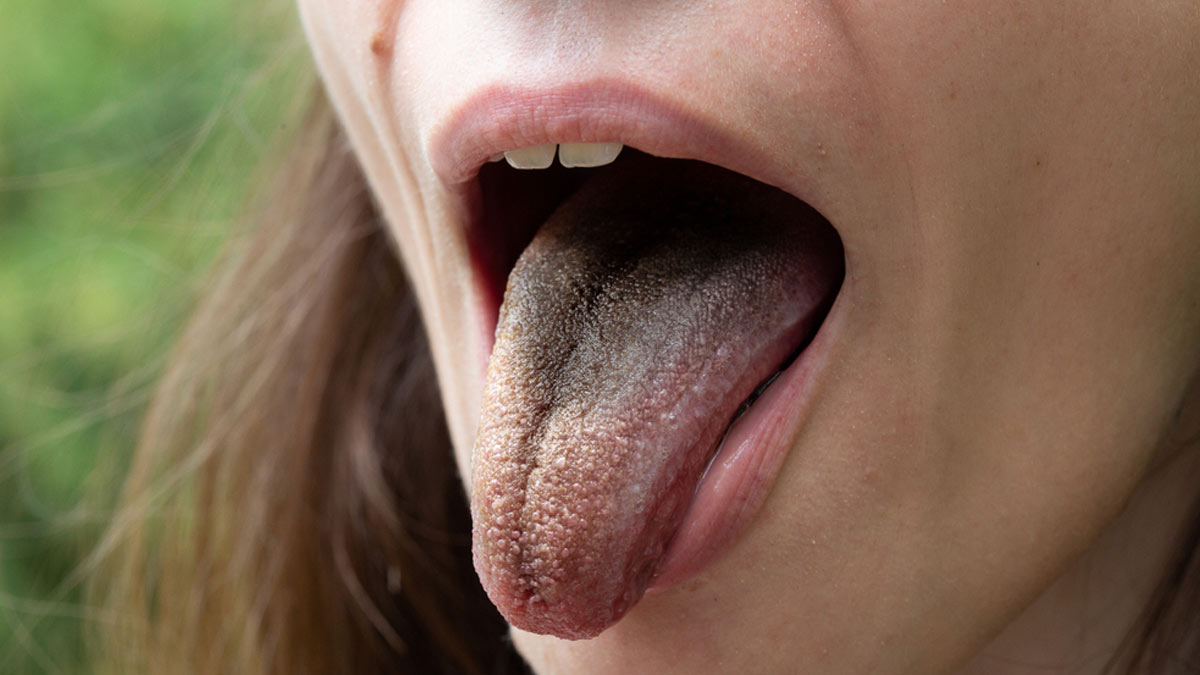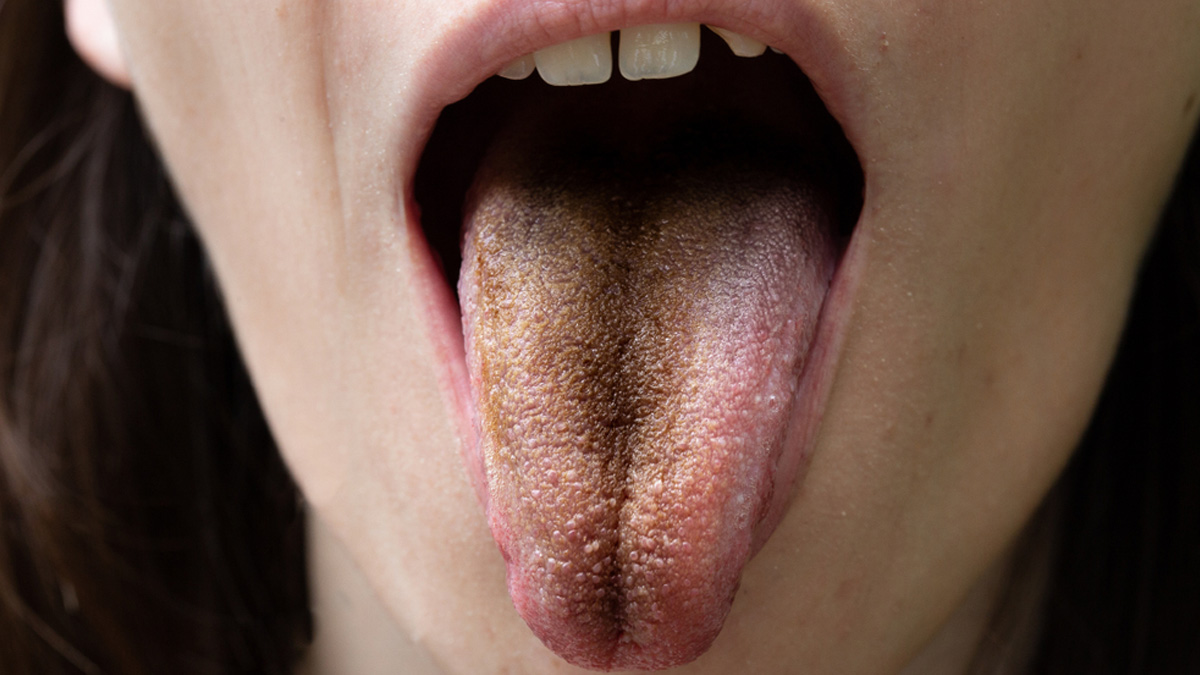
Have you ever wondered why doctors often ask us to stick out our tongue during a physical examination? If yes, then you will be surprised to know that our tongue holds answers to various underlying health issues, including diabetes, which, according to a 2019 study published in the journal Medicine, can lead to a thicker yellow coating, a bluish tint to the tongue, and deeper cracks on the tongue's surface. In fact, researchers found tongue diagnosis to be a helpful preliminary tool to identify type 2 diabetes.
Table of Content:-
Tongue colour changes, in particular, can either indicate underlying chronic conditions that may require medical attention or harmless infections that go away on their own with proper oral hygiene. In any case, they should consult with a doctor. In this article, we discuss the cause of black hairy tongue, what it means, and how it can be treated.
Also Read: Burnt Your Tongue? Here's What To Do To Make It Feel Better
What Is A Normal Tongue Colour?

In an interaction with the OnlyMyHealth team, Dr S A Rehman, General Medicine and Associate Professor, Noida International Institute of Medical Sciences and Hospital, NIU, says that a healthy tongue is usually pink with a thin white covering.
This usually signifies proper circulation, he adds.
What It Means To Have A Black Hairy Tongue

A black, hairy tongue is characterised by a tongue that is black in colour and has a furry look. It arises when the microscopic bumps on the surface of the tongue grow larger, says Dr Rehman, adding that the condition is frequently caused by poor dental hygiene, smoking, excessive alcohol consumption, or certain drugs.
Medical News Today reports thaa keratin buildup on the tongue can also result in a black, hairy tongue. Keratin is a protein that helps form hair, nails, and your skin's outer layer, also known as the epidermis.
While the condition may appear alarming, Dr Rehman says that it is mostly harmless and can be managed by improving dental hygiene and treating underlying problems.
White, Red, And Yellow-Coated Tongue
There are many other different tongue colours that can be concerning.
A thick white layer on the tongue may indicate oral thrush, dehydration, or poor oral hygiene. Oral thrush is a fungal yeast infection that leads to pain, irritation, and redness. Dehydration is a sign of insufficient water intake, which can lead to a dry, pale mouth and can reduce saliva formation.
A bright red or strawberry-coloured tongue could indicate a vitamin deficiency, Kawasaki disease in children, or scarlet fever.
Lastly, a yellowish coating on the tongue may indicate liver or gallbladder issues, jaundice, or stomach problems, says Dr Rehman.
Also Read: White Tongue: Causes, Remedies & Risk Factors
What Blue Or Purple Tongue Reveal?

According to the doctor, a bluish or purple tint on the tongue may indicate poor circulation, oxygen deprivation, or cyanosis, all of which can be symptoms of underlying health conditions such as heart or lung difficulties.
This type of change in the tongue must be consulted with a doctor immediately, as it can lead to further complications.
Bottomline
Changes in the colour of your tongue can be a good indicator of various health issues. However, they should not be the only form of diagnosis. While they can reveal health problems like dehydration, fungal infections, vitamin deficiencies, and chronic conditions such as liver or heart problems, they must always be followed up with tests and other screening methods. Ensure that you consult your doctor and find out the exact cause of your health problems.
Also watch this video
How we keep this article up to date:
We work with experts and keep a close eye on the latest in health and wellness. Whenever there is a new research or helpful information, we update our articles with accurate and useful advice.
Current Version